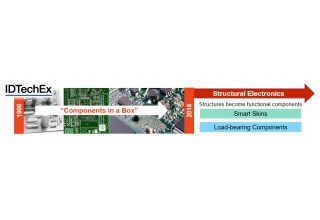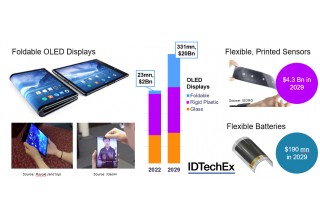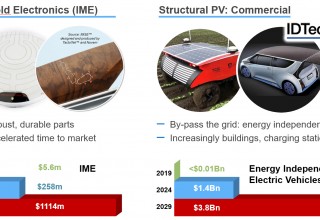Form AND Function with 3D Electronics: Covered at The IDTechEx Show!

SANTA CLARA, Calif., October 29, 2019 (Newswire.com) - Since the inception of electronic devices there have been radical improvements in performance and miniaturization. However, the form of electronics has barely changed – typically discrete components are mounted on circuit boards which are put in a box. As Integrated Circuits have reduced in size, cooling systems have become larger or under more strain. Area is often minimized at the expense of stacking layers and components upwards. This old “components-in-a-box” format is changing as organizations look to new form factors of electronics to unleash new possibilities of product differentiation and create new markets.
Electronics 2.0: Structural Electronics?
Shifting the Battleground
For decades now those in consumer electronics have mostly competed on performance and miniaturization. Incremental improvements in these aspects are now resulting in incremental sales improvements for many consumer electronic devices such as smart phones and tablets. Something much more substantial must be changed for substantial differentiation and substantial sales increases.
So what business strategy do you follow when more and more money has to be invested to achieve relatively small improvements with significant competition racing to achieve this, all the while with uneven levels of investment and subsidies globally? You shift the battleground to competing on a new frontier.
Those in the flexible and printed electronics industry are among the pioneers of radically shifting the battleground to the surprisingly ill-addressed opportunity of the device form factor. This is one of the key themes of research that analysts IDTechEx addresses, from materials to devices, and it is one of the key themes of the huge global IDTechEx Printed Electronics USA 2019 event to be held in Santa Clara on Nov 20-21, to an audience of over 3,500 attendees coming from over 60 countries.
Flexible First
First comes flexible electronics. Flexible circuit traces and electrodes are nothing new but flexibility is now transferring to multiple components, from foldable OLED displays to flexible sensors and batteries.
In some cases the new use case is clear: foldable displays offer a replacement to flat displays in smart phones, for example. First versions this year have seen multiple first-mover challenges – innovation as significant as this takes time to perfect for the mass market, but there is little doubt that eventually foldable displays will become a common feature in smart phones of the future. Indeed, at Printed Electronics USA, speakers such as Royole Corporation, Visionox, Nth Degree, VueReal, LunaLEC and Ynvisible will discuss flexible display advancements across many applications and many others will cover flexible touch panels, barriers and the enabling materials and manufacturing process.
In other cases new flexible components will not necessarily be appropriate to replace what already exists – where the existing incumbent components may be mature, inexpensive and well suited for the application. Here the opportunity is to create new products and in turn new markets that were not feasible before thanks to the new form factors now available. At the Printed Electronics USA event organizations will present on topics ranging from electronic skin patches to structural health monitoring and much more in this regard. New market creation needs creative product design skills, and the event addressed that through voice of the customer presentations and bringing together enabling components with product designers and OEMs.
Structural Electronics
Then there is structural electronics, whereby 3D surfaces can become the substrates for electronics or components can even become load bearing. There are many ways to create 3D electronics, from fitting 2D flexible circuits to 3D shapes, or molding 2D electronics into 3D shapes (In Mold Electronics). In Mold Electronics (IME) will create a huge market in its own right – a $1.1 Billion business ten years from now.
Flexible solar is enabling solar powered or solar assisted vehicles. Not only are vehicles from the humble weeder to the family car becoming autonomous, but they are also becoming energy autonomous.
These exciting industries and technologies will be covered at Printed Electronics USA – the world’s largest event on the topic with the specific target of addressing the needs of customers seeking differentiation and therefore the key value proposition of the emerging innovations.
The exhibition, with over 250 exhibitors, features many working on 3D electronics and conference tracks cover topics ranging from stretchable sensors to In Mold Electronics to 3D printed electronics.
Learn more and register by Nov 1, 2019 for the 10% early bird discount. See www.PrintedElectronicsUSA.com for details.
Media Contact:
Jessica Abineri
Marketing Coordinator
+44(0)1223 812300
Source: IDTechEx


